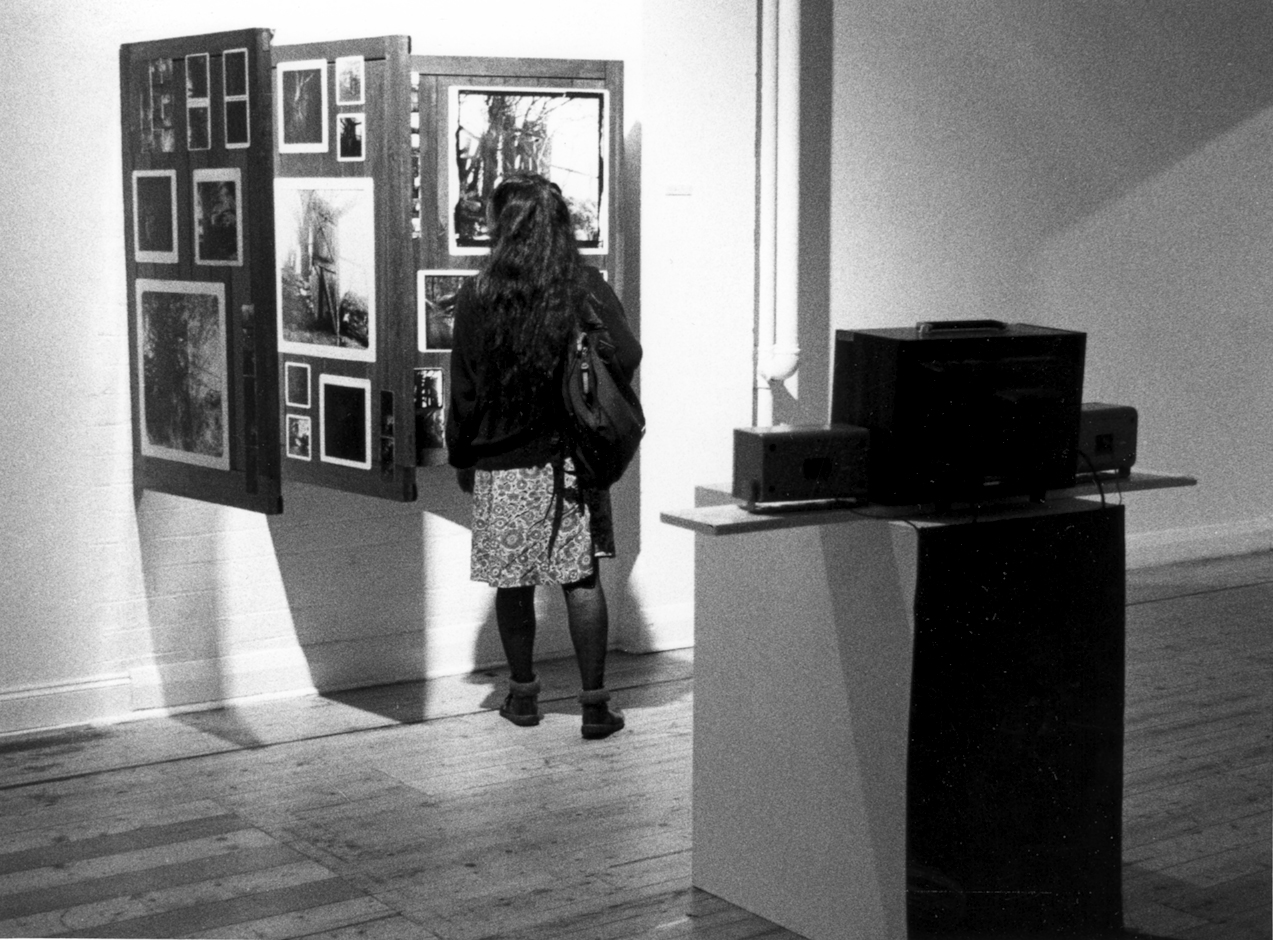La Belle et Le Bete
Dimensions: 100 x 100cm.
This photo installation used photocopy sheets of an essay by Jean Fitton and some comments by myself, collaged together with some found graphical material. It was in response to an invitation from Robert Short, a curator specialising in surrealist art, to submit some work for a show at the Campden Arts Centre in London. I had no idea why he had contacted me as though I had a deep interest in surrealism, in particular the surrealist films of Luis Bunuel, I had not exhibited in that context previously.
Just before receiving the invitation, I had been asked to mark Jean Fitton’s short essay on the films of Luis Bunuel. Essays were not part of studio practice at the time, but I agreed to help out the history department, who a little later nonetheless ticked me off for scrawling over her work. She readily admitted to copying most of the essay from Raymond Durgnat’s terrible book on the filmmaker and she later submitted a rewrite following suggestions I had made in my comments.
Ever the opportunist, I suggested to Jean that we submit a work to the exhibition, SURREALISM UNLIMITED, based on the documents we had both produced, to which she eagerly agreed. For a final visual flourish, I added some colour; cutting out some paint colour-chart rectangles and in summoning the gods of surrealist chance, dropped the cutouts from a height of several feet, onto the work below. Where they fell was where they were glued in place.
I didn’t for a moment think that a discussion held on paper would ever breech the walls of the surrealist establishment in London. But it did….. such company we had stumbled into!
Shattered by the fact the work did not sell, it was later shoved into storage and forgotten.
Some years later when it was being shifted during another house move, I discovered many of the coloured rectangles were missing…… ‘Oh yes, your son did that when he was of crawling age – he carefully peeled them off’. What remains is but a shadow of the artwork’s former vibrant presences.


